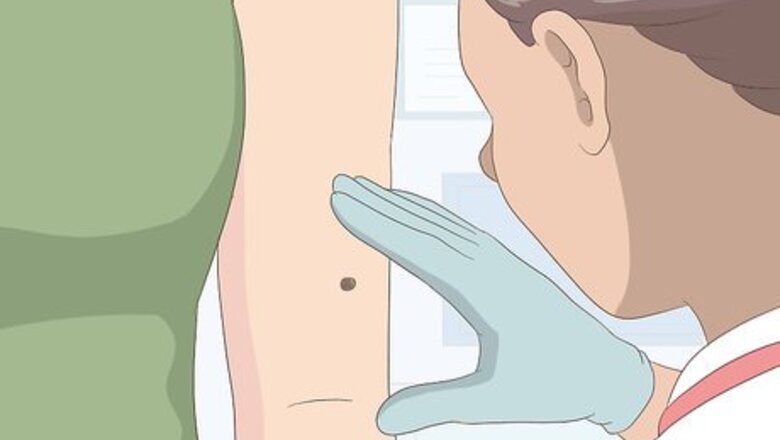
views
- Have your mole removed surgically by cryosurgery, surgical excision, or shaving.
- To remove your mole at home, swab apple cider vinegar onto it every day to gradually dissolve it.
- Use mole removal creams or whitening creams to minimize your mole’s appearance.
Surgical Treatments
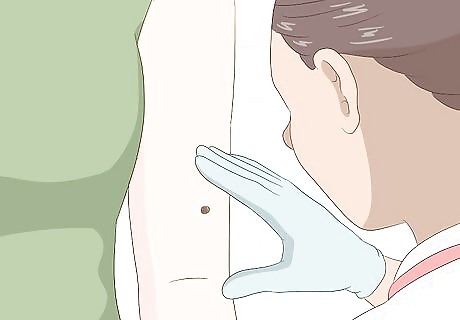
Consult your dermatologist about the best way to remove your mole. Most moles are benign, but be sure to have your mole examined by a doctor or dermatologist before you get it removed. They will be able to tell you whether your mole is malignant. They will also discuss what mole removal method is best for you. Your doctor will use the ABCDE (Asymmetry, Border, Color, Diameter, and Evolving) guide to assess your mole. If your mole is asymmetrical, has a fuzzy or ragged border, is an unusual or uneven color, is larger than a quarter of an inch (6 mm) across, or is changing in any way, it may be malignant. Itching and bleeding are also signs of malignancy. The vast majority of moles are benign. If your mole is not dangerous, it may not be necessary to have it removed. However, many people prefer to have their moles removed for aesthetic reasons. If a mole is malignant, it must be removed as soon as possible.
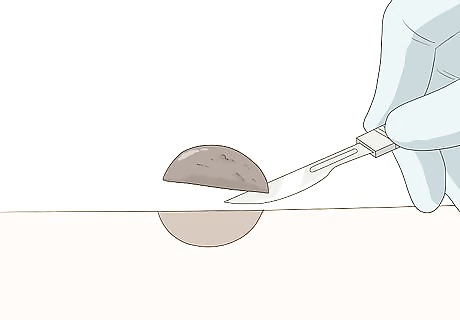
Consider removal using shaving. This type of removal works best for surface level moles. The mole is shaved off with a scalpel. First, the surgeon will cut the mole away, so it no longer forms a bump on the skin. With this type of removal, stitches are unnecessary. The wound will be cauterized or covered in a cream or solution to stop the bleeding. Then a topical antibiotic will be applied. The wound will be bandaged up and you'll be free to leave the office in a matter of minutes. Keep in mind that moles removed by shaving are more likely to grow back than those removed by surgical excision.
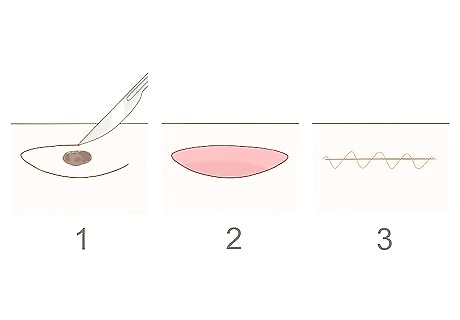
Consider removal using an excision followed by stitches. This type of removal works best for moles that are darker in color or flat moles that penetrate deep within the skin. First, the mole and surrounding skin will be sterilized and numbed. Then, the surgeon uses a scalpel to cut out the mole. How deep the incision needs to be will depend on the size of the mole and whether or not it's malign. A wider area is usually cut away when the mole is malign, to ensure it is removed completely. The wound is then stitched closed. Some types of stitches require a follow-up appointment to be removed, while others will dissolve on their own.
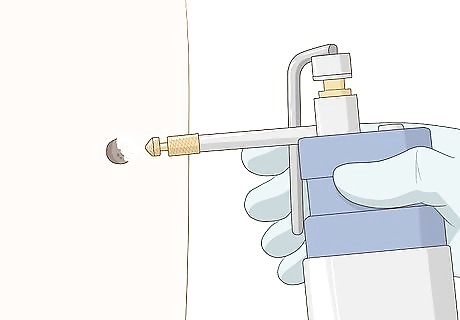
Consider removal using cryosurgery, or freezing. This is an alternate mole removal method which uses liquid nitrogen to freeze and destroy the mole. It is only offered by certain clinics. The liquid nitrogen can be applied to the mole directly using a cotton swab, or may be applied in the form of a spray. The liquid nitrogen may need to be applied several times to completely get rid of the mole. It will cause a blister to form on the skin, but once this heals, the skin will likely return to normal.
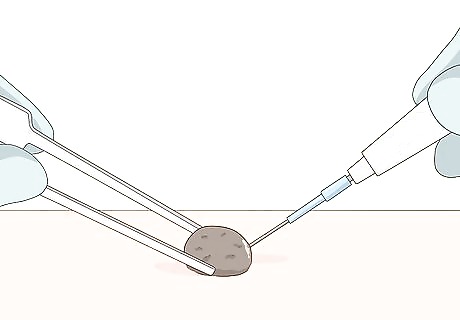
Consider removal using electrocoagulation, or burning. Electrocoagulation burns the mole by shocking it with an electric current. This destroys the mole's tissue after several sessions. There is no need for stitches with this method, as the heat from the electricity cauterizes the wound. With this procedure, there would also be no tissue to send to a lab for cancer testing. Two other specialized mole removal methods offered by some clinics are radiosurgery, which uses radio frequency waves rather than electricity, and laser treatments. Both of these work on the same idea of burning the mole tissue away.
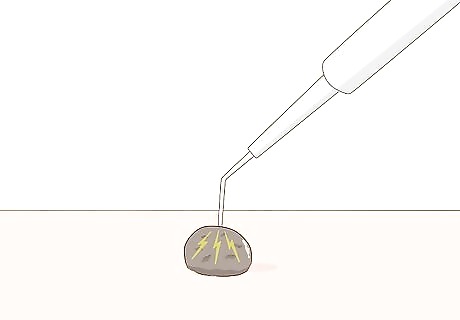
Ask your doctor about electrosurgery. Electrosurgery may be a good option to discuss with your doctor. Using electrosurgery for mole removal can reduce any bleeding that may occur, and this in turn will reduce the risk of complications, promote rapid wound healing, and result in minimal scarring.
Home Remedies
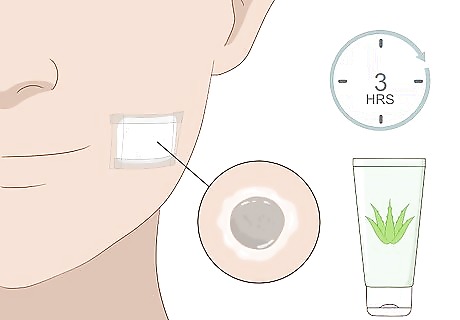
Apply aloe vera to the mole. Aloe vera may be useful as a remedy for skin conditions, such as psoriasis, cold sores, burns, and frostbite. Applying aloe vera to your mole daily may help to get rid of it. To use aloe vera for mole removal, apply a generous amount of aloe vera to your mole, and then cover the mole with a clean cotton bandage. Leave the bandage on for 3 hours, and then remove it and wash away the aloe. Do this every day for 3 weeks and you may see results.
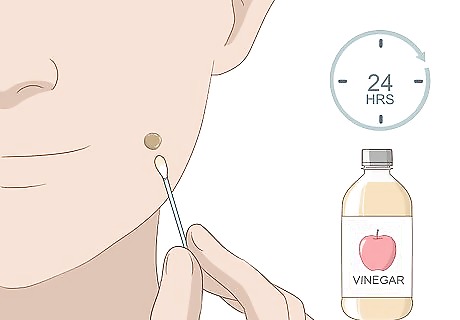
Swab apple cider vinegar onto the mole. Apple cider vinegar has been used as a home treatment for mole removal. The acids contained in the vinegar, such as malic and tartaric acid, may dissolve the mole, completely removing it from the skin. Simply swab a little onto clean skin every day using a q-tip. Be very cautious using apple cider vinegar to remove a mole. Doctors don’t recommend it, and it’s been known to cause chemical burns and scarring.
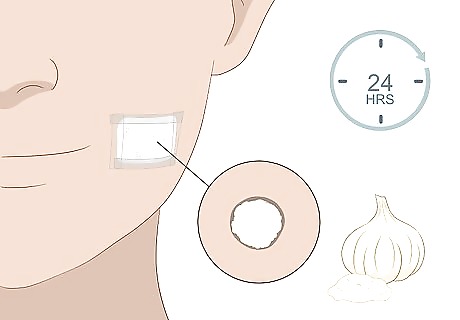
Try garlic. Garlic is another multi-purpose remedy, which many claim as an effective treatment for mole removal. Simply crush some fresh garlic into a paste and carefully apply directly to the mole, making sure to avoid the surrounding skin (garlic can burn). Cover with a bandage and leave for a few hours. This method has been said to work in as little as 5 days. Be aware that garlic may cause burning and scarring.
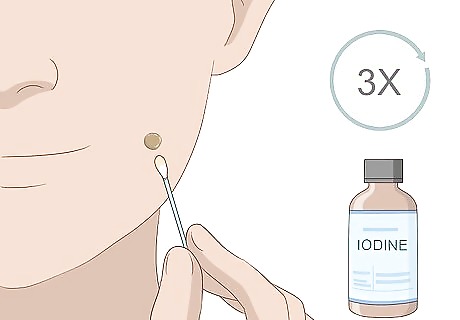
Use iodine. Iodine is a good option for people with more sensitive skin, as it won't burn like garlic or apple cider vinegar. Apply the iodine directly to the mole using a q-tip, up to three times a day. Continue to do this every day, until you see a noticeable improvement in the mole's appearance.
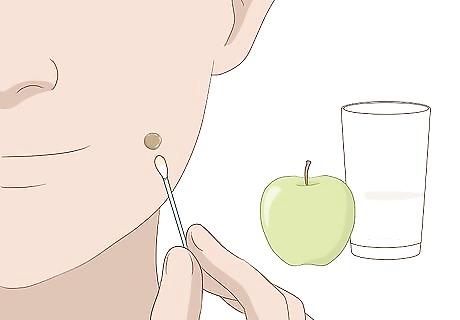
Try sour apple juice. Juice a couple of sour cooking apples and apply a little juice directly to the mole. Like the apple cider vinegar, the acids in the juice will work to dissolve the mole, though it may be at least three weeks before you start to notice any improvements in the mole's appearance.
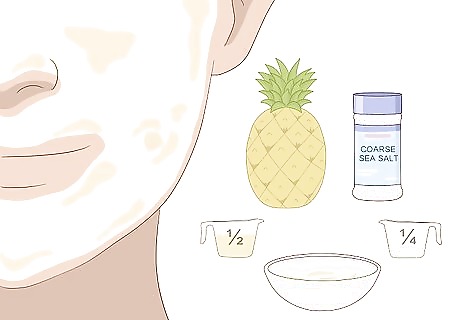
Prep with pineapple and sea salt. Pineapple juice can be applied directly to the mole, but you should also try blending half a cup of fresh pineapple and a quarter cup of coarse sea salt to make a fantastic scrub. This may help to remove the top layers of skin from the mole.
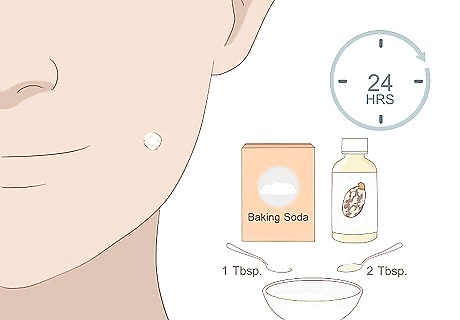
Test out castor oil and baking soda. Combine 1 US tbsp (15 ml) of baking soda and 2 US tbsp (30 ml) of castor oil to make a paste. Cover your mole with it, and leave for several hours or overnight before washing off.
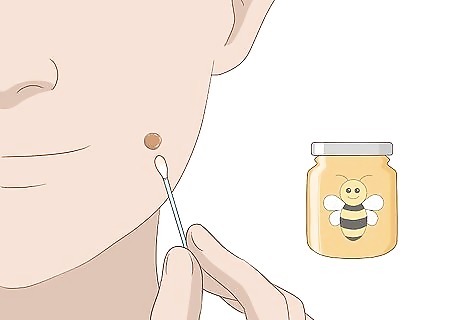
Try using honey. Honey is well-known as a delicious edible treat, but did you know it also boasts impressive anti-bacterial and healing properties? Dab a little honey directly onto the mole for a safe, natural treatment. Add in a drop of soothing, softening flaxseed oil too, if you like.
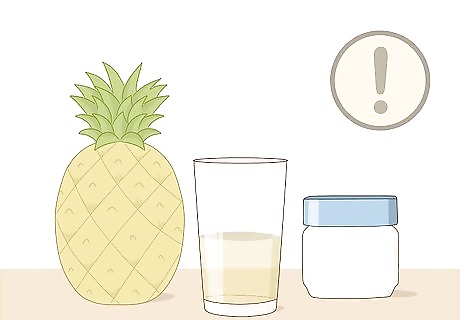
Use home remedies responsibly. There are numerous home remedies designed to get rid of moles using natural ingredients. Though there is little science to back up some of the treatments, many people will attest to their effectiveness. Just be careful when using acidic natural juices, which have the potential to burn the skin. To use home remedies safely but effectively, apply the natural juices at least once and a maximum of 3 times a day. If you have very sensitive skin, only let the juices sit on your skin for 10 to 15 minutes, to prevent it from becoming irritated. Try applying a little petroleum jelly to the skin around the mole after removing the treatment. This will prevent it from becoming unnecessarily irritated by the mole treatments. The length of time it takes for a mole to lighten or disappear will differ from one person to another. Be aware that home remedies are not likely to work as quickly or be as effective as surgical removal or stronger medical creams, and some at-home remedies, such as garlic or apple cider vinegar, may cause chemical burning and scarring.
Medicated Creams
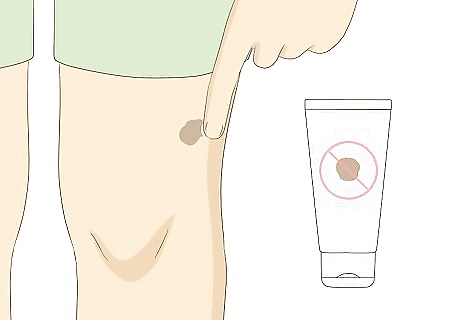
Try using mole removal cream. Mole removal creams are an affordable and fairly effective method of removing moles at home. Most creams work by lightening the mole until it is no longer visible, which can happen in a matter of weeks. Stronger, over-the-counter creams focus on peeling the skin away layer by layer until the mole is removed. Keep in mind that mole removal creams can actually leave worse scars than surgical removal.
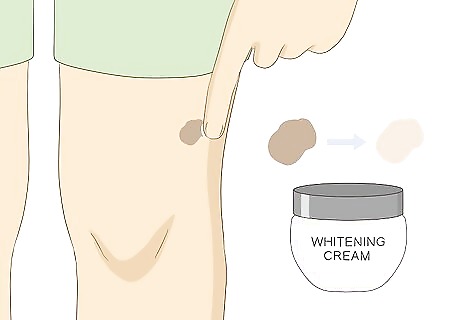
Try out whitening cream. A general-use whitening cream can also be effective at reducing the appearance of moles, but it will not actually remove the mole. A whitening cream will lighten the color of your mole, making it less obvious.



















Comments
0 comment